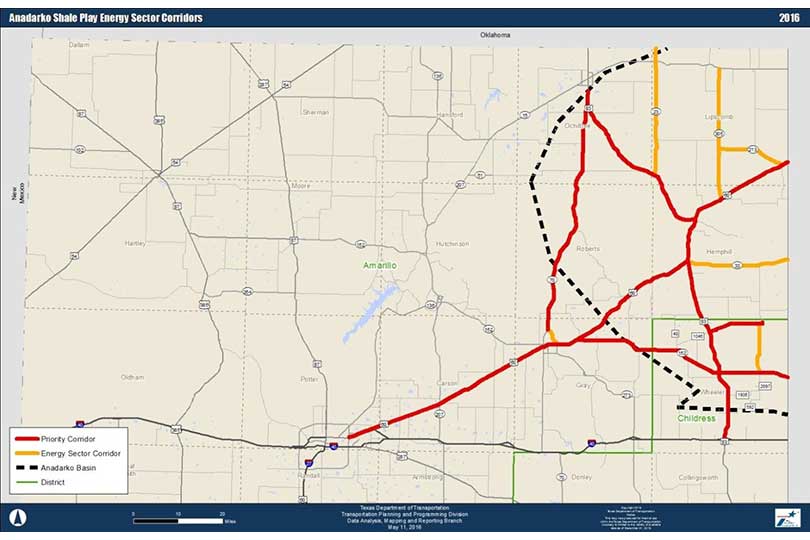By Jessica Domel
News Editor
Thanks to voter action and the Texas Legislature, the Texas Department of Transportation (TxDOT) is now hard-at-work repairing rural roadways affected by the oil and gas boom.
“A lot of Texas roads have been in bad shape over the last five or six years because of increased energy sector activity related to oil and gas,” Mark Cross, TxDOT public information officer, said. “We have gone about trying to address those pretty aggressively—especially over the last two or three years with the help of the state legislature.”
In 2013, the Texas Legislature passed a bill establishing TxDOT’s County Transportation Infrastructure Fund grant program. It authorized $224.5 million to be distributed among eligible counties affected by oil and gas production.
“The second part came in 2014. Texas voters passed Proposition 1 that was put forth by the legislature,” Cross said. “This is a constitutional amendment that allowed for some additional transportation funding, not just for energy sector roads. It’s additional funding in general and then a small percentage of that funding also went to energy sector roads.”
The constitutional amendment allows the state to transfer money collected from oil and gas taxes from the state’s Rainy Day Fund into the State Highway Fund.
In 2015, the state comptroller approved $1.75 billion available for transfer under the new amendment.
According to TxDOT, it began awarding contracts for projects in March 2015.
This year, TxDOT proposed a program to strengthen pavements and make other improvements to roadways in oil and gas regions.
Improvements include: strengthening pavement shoulders, adding shoulders, adding turn lanes at key intersections and constructing passing lanes on select corridors, according to Cross.
TxDOT has sorted roadway improvements into two categories—Priority 1 and Priority 2—to determine the allocation of funds.
They estimate the Priority 1 roads in the Eagle Ford Shale in South Texas will require more than $500 million to repair.
“Eagle Ford was an area that was hit pretty hard like several other areas of the state where there were shale regions being worked on,” Cross said. “In 2015, the Eagle Ford Shale region experienced more than 3,000 crashes and 247 fatalities. That was pretty significant for that area. That area has also had projects that we’ve addressed over the last couple of years, and we’ll continue to do so to make sure we’ve got them back on a pathway to safety.”
Damages to roadways in the Permian Basin area in West Texas are estimated at more than $676 million. The Barnett Shale, near the DFW metroplex, is estimated to need $271 million in Priority 1 repairs. The Anadarko Basin on the east side of the Panhandle is estimated at $97 million in roadway repairs, while the Haynesville-Bossier in East Texas is estimated at $179 million.
The five shale plays’ Priority 1 needs top $1.5 billion, according to a recent TxDOT survey. Roadway improvements classified as Priority 2 will cost an additional $1.25 billion.
It’s not clear how long it will take to improve the roadways, but Cross says TxDOT will continue working until they can get the roadways back to where they need to be.
TxDOT is hosting community meetings about improvements across the state. A presentation on the improvements, as well as future meeting dates, is posted at RoadsForTexasEnergy.com.

